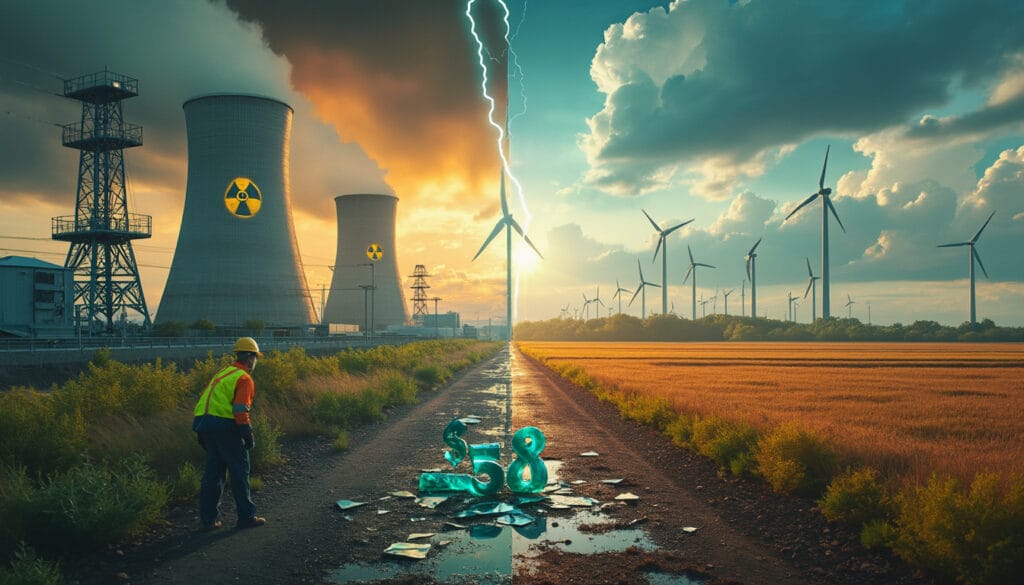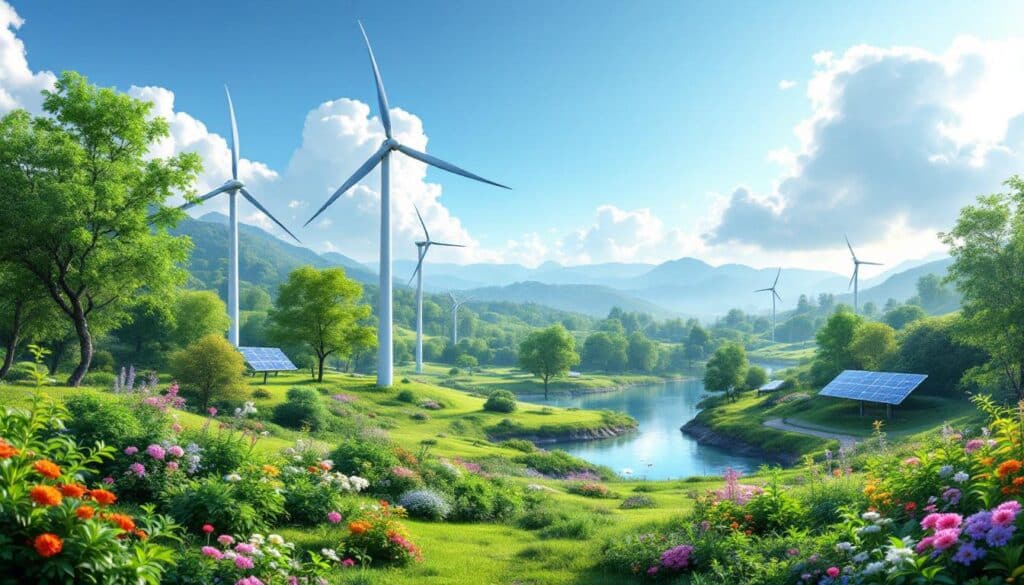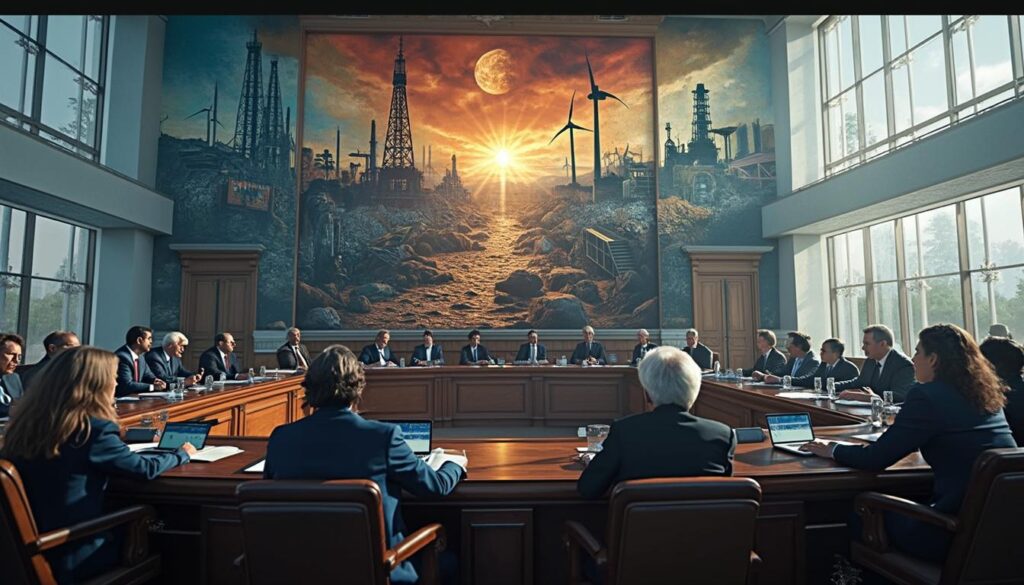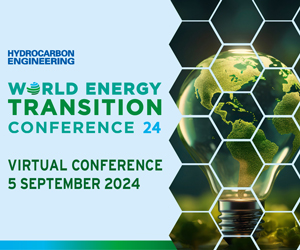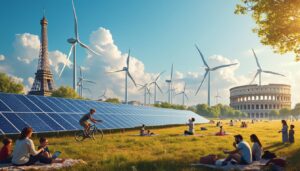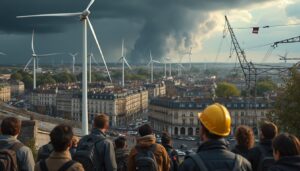A new analysis highlights the economic repercussions of limiting renewable energy in Australia.
According to experts from Green Energy Markets, a cap set at 54% could halt significant private investments.
This decision risks hindering the development of renewable energy infrastructure, severely impacting the national economy.
The Coalition’s proposal could thus prevent at least $58 billion in private investment in new projects and interrupt billions of dollars in secondary spending in local communities. If the share of renewables is capped at 54%, an estimated level by Frontier Economics, it would slow industrial expansion long before the targets of Labor, which aims for 82% renewable energy by 2030. This cap could be reached as early as 2028, preventing the construction of nearly 29 gigawatts of new large-scale solar and wind farms. Consequently, nearly 37,700 jobs in construction and 5,000 jobs in operation would be at stake, thus jeopardizing essential income for farmers and rural communities.

Could a coalition nuclear plan hinder renewable energy in Australia?
The proposal for a coalition aimed at limiting the development of renewable energy in Australia raises serious concerns. A recent analysis highlighted that this decision could stop at least $58 billion in private investments in new projects while paralyzing additional spending in local communities. This plan, supported by the industry group Clean Energy Council, aims to cap the use of renewable energy at 54% of total energy consumption. This limit, based on modeling by Frontier Economics, is at the heart of the current political debate between left and right parties.
What would be the economic impacts of a cap on renewables?
Imposing a cap at 54% for renewable energy would have significant economic repercussions. According to the analysis from Green Energy Markets, this would prevent the construction of nearly 29 gigawatts of new large-scale solar and wind power plants. This slowdown would translate into the loss of 37,700 jobs in construction and 5,000 jobs in permanent operation and maintenance. Moreover, these projects are essential for injecting funds into electrical infrastructure, as highlighted by Kane Thornton, CEO of the Clean Energy Council. By limiting private investments, the government would compromise not only economic growth but also the transition to more sustainable energy sources.
How does the coalition plan to replace renewable energy?
Faced with reduced investments in renewables, the coalition plans to compensate for this shortfall by increasing the use of fossil fuels. This would include extending the lifespan of coal plants and increasing dependence on natural gas. Meanwhile, the right-wing party proposes to develop taxpayer-funded nuclear power plants, with seven sites planned primarily after 2040. However, this plan draws criticism related to energy security and environmental impact while delaying the transition to cleaner energies.
What alternatives does the Labor party propose?
The Labor party firmly opposes the coalition’s strategy and proposes a transition to 82% renewable energy by 2030. This ambition is supported by investments in electrical infrastructure, with a budget of $20 billion to strengthen the national grid. The Labor party’s analysis highlights that increased dependence on aging coal plants could lead to costly power outages for the economy. Furthermore, they emphasize the importance of renewable solutions to ensure long-term energy security and reduce carbon emissions.
What is the position of other parties, like the Greens?
The Greens propose innovative initiatives to accelerate the energy transition. One of their key proposals is to give tenants the right to install publicly funded solar panels, thereby reducing electricity bills and greenhouse gas emissions. According to Adam Bandt, leader of the Greens, this measure would benefit millions of Australian tenants while stimulating the renewable energy market. This approach aims to reconcile economic concerns with environmental objectives, providing a tangible solution to the issues of cost of living and climate crisis.
What are the environmental issues related to this debate?
The debate among parties on Australia’s energy future raises crucial environmental issues. Limiting renewable energy to 54% hinders efforts to reduce greenhouse gas emissions and slows the transition to a sustainable economy. Moreover, extending the lifespan of coal plants and increasing the use of natural gas worsen pollution and contribute to climate change. In contrast, investing in renewables, as proposed by the Labor party, would reduce Australia’s carbon footprint and promote cleaner, environmentally friendly energy sources.
How are local communities affected by these policies?
Energy policy decisions directly impact local communities. Reducing investments in renewable energy means fewer development projects, resulting in job losses and economic stagnation in regions dependent on these industries. Rural areas, in particular, could suffer from a lack of financial support and growth opportunities. Conversely, a policy favoring renewables would boost the local economy by creating new jobs in the construction and maintenance of energy infrastructure. It would also contribute to strengthening the energy infrastructure regionally, making communities more resilient to fluctuations in the energy market.
What arguments do nuclear proponents make in this context?
Supporters of nuclear energy in the coalition argue that this energy source can provide stable and reliable power, essential to meet growing demand. They claim that nuclear is indispensable for diversifying the energy mix and reducing dependence on fossil fuels. However, this position is contested by environmentalists and renewable energy experts, who point to the risks associated with nuclear waste, the high costs of building plants, and uncertainties related to safety. Furthermore, the implementation timelines for nuclear contrast with the urgency to accelerate the transition to renewables to combat climate change.
What are the technological challenges for a transition to renewables?
The transition to renewable energy poses several technological challenges. One of the main obstacles is the effective development and storage of solar and wind energy to ensure a constant supply. Advances in energy storage technologies are necessary to address the intermittency of renewable sources. Additionally, improving electrical transmission infrastructure is crucial to effectively distribute the energy produced across the country. Innovative projects, such as those mentioned on GreenJustNow, explore solutions such as smart grids and energy management systems to overcome these challenges and facilitate a successful energy transition.
What is the role of private investments in the renewable energy sector?
Private investments play a crucial role in the development of renewable energy. These funds are essential for financing research, development, and construction of new energy infrastructures. The analysis from Green Energy Markets emphasizes that limiting private investments could not only stifle innovation but also slow economic growth in this dynamic sector. Encouraging public-private partnerships and offering tax incentives can stimulate investor interest and accelerate the implementation of renewable projects. Additionally, attracting foreign investments could strengthen Australia’s position as a global leader in clean energy.
How does current energy policy influence national energy security?
The energy policy adopted by the coalition has direct implications for Australia’s energy security. Increased reliance on fossil and nuclear energies may expose the country to geopolitical risks and fluctuations in fossil fuel prices. Moreover, limiting renewables could reduce the resilience of the electrical grid against natural disasters and cyberattacks. In contrast, diversifying the energy mix with a strong renewable component would bolster energy security by reducing vulnerability to disruptions in fossil fuel supply. Investing in renewables and storage technologies would also ensure a more stable and sustainable energy supply in the long term.
What is the public perception of this energy debate in Australia?
The debate on energy policy in Australia divides public opinion. Many citizens strongly support the transition to renewable energy, aware of the climate stakes and long-term economic benefits. However, some groups, particularly in regions dependent on fossil industries, fear job losses and economic downturns. Awareness campaigns and educational initiatives are essential to inform the public about the benefits of renewables and the viable alternatives offered by Labor and Green policies. Transparent and inclusive communication can help overcome resistance and foster a national consensus on the best path forward.
What are the international examples of success in energy transition?
Several countries have demonstrated that a successful transition to renewable energy is possible and beneficial. For instance, Germany has implemented robust policies promoting solar and wind energy, thereby reducing its dependence on fossil fuels and decreasing its carbon emissions. Denmark is another example, with strong integration of wind power into its energy mix and continuous investments in green technologies. These successes show that with political will, strategic investments, and collaboration between the public and private sectors, it is possible to create a sustainable energy economy. Australia can draw inspiration from these models to develop its own strategies and achieve its energy goals effectively and ecologically.
Articles similaires
Thank you!
We will contact you soon.

